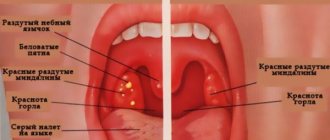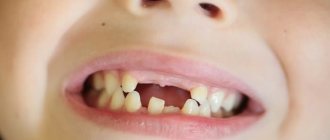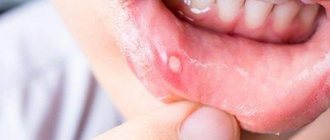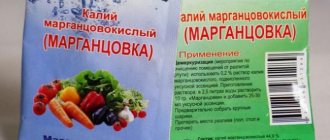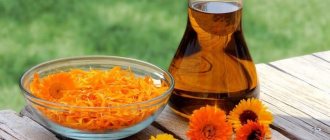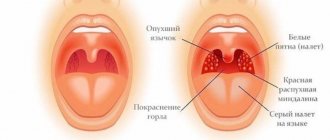pharmachologic effect
Iodine has a pronounced antimicrobial effect . The active substance has a cauterizing effect in high concentrations. Small doses of elemental iodine have a local irritating effect. The principle of action is based on the ability of the active substance to precipitate tissue proteins. In terms of metabolism, iodine exhibits an increase in dissimilation processes. In patients with atherosclerosis, a decrease in the level of beta lipoproteins and cholesterol in the blood is recorded. The active substance can increase lipoproteinase and fibrinolytic activity of serum and slow down blood clotting .
The accumulation of iodine in syphilitic gums contributes to their softening and gradual resorption. At the same time, the accumulation of the active component in tuberculosis lesions enhances the inflammatory process. When the active substance is released by the excretory glands , there is an increase in secretion and irritation of the glandular tissues. In small doses, iodine enhances lactation and has an expectorant effect. At high iodine concentrations, suppression of lactation is recorded.
Modern Pharmaceuticals of Russia
Lugol solution for topical use 1%
INSTRUCTIONS for the use of the medicinal product for medical use
Registration number:
LP – 001397
Tradename:
Lugol
INN or group name:
Iodine+[Potassium iodide+Glycerol]
Dosage form:
Solution for topical use
Composition for 1g:
Active substance:
iodine – 10 mg;
Excipients:
potassium iodide – 20 mg; glycerol – 940 mg; purified water –30 mg.
Description:
Transparent syrupy liquid of red-brown color with the odor of iodine. When released from the vial, the drug comes out as a stream of liquid.
Pharmacotherapeutic group:
Antiseptic.
ATX Code:
R02AA20
Pharmacological properties:
The main active ingredient is molecular iodine, which has an antiseptic and local irritant effect. It has a bactericidal effect against gram-negative and gram-positive flora, and also acts on pathogenic fungi (including yeast); Staphylococcus spp. more resistant to iodine, however, with long-term use of the drug, suppression of staphylococcal flora is observed in 80% of cases; Pseudomonas aeruginosa is resistant to the drug. When applied to large surfaces of the skin and mucous membranes, iodine has a resorptive effect: it participates in the synthesis of T3 and T4, and has a proteolytic effect. Potassium iodide improves the dissolution of iodine in water. Glycerol has a softening effect. The drug is low toxic.
Pharmacokinetics:
When the drug is used in recommended doses, iodine resorption through the skin and mucous membranes of the oral cavity is insignificant. Upon contact with mucous membranes, 30% is converted into iodides. If accidentally swallowed, iodine is rapidly absorbed. The absorbed part penetrates well into organs and tissues (including thyroid tissue). It is excreted mainly by the kidneys, to a lesser extent by the intestines and with sweat. Passes into breast milk.
Indications for use:
Infectious and inflammatory diseases of the mucous membrane of the oral cavity and pharynx in adults and children.
Contraindications:
Decompensated liver and kidney diseases. Hypersensitivity to iodine and other components of the drug.
Carefully:
Hyperthyroidism, dermatitis herpetiformis, children under 12 years of age.
Use during pregnancy and lactation:
Use during pregnancy is contraindicated. Iodine passes into mother's milk and may potentially affect thyroid function in breastfed infants. Use during breastfeeding is possible if the potential benefit to the mother outweighs the possible risk to the baby. You should consult your doctor.
Directions for use and dosage:
Locally. Apply 4-6 times a day to irrigate the mucous membrane of the oral cavity, pharynx, pharynx, applying the drug with one press of the spray head. The injection of the drug is targeted and the sprayer, depending on the disease, must be directed directly to the source of inflammation.
It is recommended to hold your breath at the moment of injection.
If you are using a new package of the medicinal product, remove the protective cap, put on the nebulizer head with tip and press the nebulizer head several times. After using the drug, it is not recommended to remove the spray head and tip.
Do not allow the drug to get into your eyes. If this occurs, the eyes should be rinsed with plenty of water or sodium thiosulfate solution.
If the symptoms of inflammation do not decrease or increase after 2-3 days of therapy, you should consult your doctor. Not recommended for long-term (more than 2 weeks) use.
Side effect:
Allergic reactions. With prolonged use, the phenomenon of “iodism”, rhinitis, urticaria, angioedema, salivation, lacrimation, acne. If this or any other side effect occurs when using the drug, you should consult your doctor.
Overdose:
Symptoms: irritation of the upper respiratory tract (burn, laryngo-, bronchospasm); if ingested - irritation of the mucous membranes of the gastrointestinal tract, hemolysis, hemoglobinuria; lethal dose – about 3 g.
Treatment: gastric lavage with 0.5% sodium thiosulfate solution, sodium bicarbonate solutions, 30% sodium thiosulfate is injected intravenously - up to 300 ml.
Special instructions:
Regular use should be avoided in patients with hyperthyroidism (thyrotoxicosis). For children under 12 years of age, use after consultation with a doctor. May affect laboratory results of thyroid hormone tests.
Sunlight and temperatures above 40°C accelerate the breakdown of active iodine.
Interaction with other drugs and other forms of interaction:
Iodine is inactivated by sodium thiosulfate.
The iodine contained in the drug oxidizes metals, which can lead to damage to metal tools and surfaces.
Pharmaceutically incompatible with essential oils and ammonia solutions.
An alkaline or acidic reaction, the presence of fat, pus, and blood weakens the antiseptic activity.
If the drug is ingested, the effect of drugs that suppress thyroid function may be reduced, and thyroid function indicators may also change.
Iodine preparations can enhance the irritating effect of certain medications (including acetylsalicylic acid) on the mucous membrane of the gastrointestinal tract.
Release form:
Solution for topical use 1%. 25 ml and 50 ml in orange glass bottles with a screw neck for medicines, sealed with a lid with a dispenser complete with a sprayer with a tip.
Each bottle, along with a sprayer with a tip and instructions for medical use, is placed in a pack of chrome-ersatz box-type cardboard.
Storage conditions:
Store in a place protected from light at a temperature of 2 °C to 25 °C. Keep out of the reach of children.
Best before date:
3 years. Do not use the drug after the expiration date indicated on the package.
Conditions for dispensing from pharmacies:
over the counter.
| Product | Individual box | G/I size | Bottle weight | Number of bottles per g/y | Number of bottles per pallet | Quantity of g/i on a pallet | Barcode |
| Lugol, 50 ml | 40x40x120 | 210x168x126 | 0,133 | 20 | 4000 | 200 | 14620008623594 |
Indications for use
External use of Lugol's solution with Glycerin:
- wound lesions;
- infectious and inflammatory lesions of the skin;
- traumatic lesions;
- myalgia.
Locally the medication is used for:
- infected burns;
- atrophic rhinitis ;
- varicose ulcers;
- chronic tonsillitis;
- thermal burns;
- trophic ulcers;
- chemical burns.
Indications for oral administration:
- tertiary syphilis;
- atherosclerotic changes.
Can children use Lugol to treat their throat - composition
The active substances of the drug, which have a detrimental effect on pathogenic flora, are iodine and potassium iodide. And glycerol, present in the composition as an additional substance, softens the effect of the drug on the mucous membranes and skin.
The drug is used in pediatrics.
Indications
The solution is used to combat infectious and inflammatory processes of the mucous membranes of the pharynx and larynx caused by pathogenic bacteria:
- angina;
- laryngitis;
- pharyngitis;
- atrophic rhinitis;
- angular stomatitis.
Staphylococcus aureus and Pseudomonas aeruginosa exhibit resistance to active components. Therefore, it is not advisable to use the drug for diseases caused by these pathogens.
For sore throat
Applying the drug to inflamed tonsils destroys pathogenic microbes that lead to the onset and progression of the disease.
Contraindications
Systematic use of the solution promotes the accumulation of iodine. For people with problems with the thyroid gland, this is not acceptable. It is very important to tell your doctor if your child has these types of problems. Has contraindications:
- allergy to iodine;
- decompensation of heart function;
- hyperthyroidism of the thyroid gland;
- liver and kidney diseases in the stage of decompensation;
- recent medical use of radioactive iodine.
You need to be careful with the dosage of the drug, since frequent and abundant application can lead to excessive irritation of the mucous membrane.
At what age is it prescribed?
The solution can be used with caution from 1 year.
Sprays are suitable for older children who are able to hold their breath while irrigating their throat.
Contraindications
Lugol's solution is not prescribed for individual hypersensitivity to iodine. Contraindications for oral administration:
- furunculosis;
- thyroid adenoma;
- nephrosis, neuritis;
- pulmonary tuberculosis;
- carrying a pregnancy ;
- hemorrhagic diathesis;
- hives;
- chronic course of pyoderma.
Age limit – up to 5 years.
Side effects
A solution with Glycerin when applied externally causes:
- lacrimation;
- Quincke's edema;
- rhinitis;
- acne;
- salivation;
- hives
When taken orally, Lugol's solution causes:
- hyperhidrosis;
- nervousness;
- diarrhea syndrome;
- insomnia;
- cardiopalmus.
If other negative reactions are registered, it is recommended to discontinue Lugol's solution.
Instructions for use (Method and dosage)
Lugol's solution can be used externally to treat damaged skin. Dosing of the medication for internal use is carried out on an individual basis. Instructions for Lugol's solution with Glycerin for angina : locally, regularly rinse the supratonsillar spaces and lacunae for 5 days. How to smear the throat: treat with gauze swabs or cotton swabs. The solution for sore throat cannot be used twice. In surgical practice, the drug is used for burns. Directions for use: Apply a moistened gauze pad to the affected tissue 2-3 times a day. Lugol's ointment is not available.
Precautions and possible side effects
Excessive use may lead to adverse reactions:
- allergic rashes, including urticaria;
- feeling of irritation, soreness and dryness in the throat;
- cough;
- increased salivation;
- sleep problems;
- tachycardia;
- inhibited reactions;
- weakness in the muscles of the body;
- swelling of the larynx;
- burn of treated areas;
- nasal congestion;
- iodism.
The drug, used according to the regimen specified by the doctor, does not affect the child’s activity. With prolonged and systematic use of the drug, iodine is absorbed and accumulated, resulting in suppression of the thyroid gland.
Up to 2 years, when spraying the spray, spasm of the muscles of the larynx and bronchi (laryngospasm and bronchospasm) may occur. This is not a feature of Lugol; this applies to all sprays with any active ingredients.
Lugol's is not intended for internal use; it is only allowed to be used externally.
If a drug with iodine is used for the first time, then before starting treatment it is necessary to conduct a skin test. To do this, apply a small amount of the substance to the elbow or wrist. After a few hours, ideally a day, examine the treated area of skin. If a rash appears, redness, itching, or pain occurs, stop use immediately.
The drug disintegrates in the presence of thiosulfate, so if the solution gets inside, the stomach is washed with this substance.
Analogs
Level 4 ATC code matches: Falimint
Suprima-ENT
Ingalipt-N
Strepsils Plus
Strepsils
Ingalipt
TheraFlu LAR
Hexoral Tabs
Lisak
Efizol
Angilex
Kameton
Anzibel
Agisept
Yox
Lugol
Laripront
Stopangin 2A
Stopangin
Septolete Neo
- Malavit;
- Orasept;
- Stopangin;
- Angilex.
Price of Lugol's solution, where to buy
The price of the medicine in Russia is 10-15 rubles. The cost of the drug in Ukraine (Lugol's roses with glycerin) is 3 UAH.
- Online pharmacies in RussiaRussia
- Online pharmacies in UkraineUkraine
Pharmacy Dialogue
- Lugol's solution with glycerin 50 ml with MFF spray
64 RUR order - Lugol's solution with glycerin 50ml with spray Tula FF
53 RUR order
- Lugol's solution with glycerin 50ml with spray Samaramedprom
44 RUR order
- Lugol's solution with glycerin 25gMFF ZAO
18 rub. order
- Lugol's solution with glycerin 25gSamaramedprom
17 RUR order
show more
Lugol's solution with glycerin
Registration number: P N001598/01
Trade name: Lugol's solution with glycerin
INN or group name: Iodine+Potassium iodide+Glycerol&
Dosage form: Solution for topical use.
Compound:
Active substance:
- Iodine - 1 g.
Excipients:
- Potassium iodide - 2 g;
- Glycerol (glycerin) - 85.5 g;
- Purified water -11.5 g.
Description: Transparent syrupy liquid of red-brown color with the odor of iodine.
Pharmacotherapeutic group: Antiseptic.
ATX code: R02AA20
Pharmacodynamics: The drug contains iodine, potassium iodide and glycerol. Iodine has a local irritant and antimicrobial effect: it destroys gram-positive and gram-negative bacteria, protozoa, cysts, viruses and some spores. The bactericidal effect is strong and manifests itself quickly (it is mostly determined by molecular iodine). Iodine reacts with dead microorganisms and proteins and its bactericidal effect is weakened because of this. Potassium iodide improves the dissolution of iodine ions in water. Glycerol has a local softening effect.
Pharmacokinetics: Upon contact with mucous membranes, 30% is converted into iodides, and the rest into active iodine. Once ingested, iodine is quickly absorbed and participates in the synthesis of thyroid hormones. Iodine in the form of various compounds is removed from the body in the urine.
Indications for use: Infectious and inflammatory diseases of the mucous membranes of the mouth, pharynx and larynx (angular stomatitis, laryngitis, tonsillitis, pharyngitis).
Contraindications: Hypersensitivity of the body to drugs containing iodine, use during pregnancy and breastfeeding.
Use during pregnancy and lactation: The drug belongs to category D (dangerous for the fetus if used for more than a week). Iodine passes into mother's milk and can suppress the thyroid function of the newborn and infant.
With caution: Decompensated liver and kidney diseases, hyperthyroidism, dermatitis herpetiformis.
Directions for use: Topically. The solution is applied to the inflamed mucous membrane of the mouth, pharynx and larynx using a cotton swab wound on a spatula and soaked in the solution, or using a spray nozzle.
Side effect: Allergic reactions. With prolonged use of the drug or individual intolerance to iodine, symptoms of iodism are possible: rhinitis, skin rashes such as urticaria, acne, salivation, lacrimation, burning in the throat, contact dermatitis, erythema, bronchospasm, nausea, vomiting, Quincke's edema.
Overdose: Symptoms: irritation of the upper respiratory tract (burn, laryngo-, bronchospasm); if ingested - irritation of the mucous membranes of the gastrointestinal tract, hemolysis, hemoglobinuria; lethal dose - 3 g. Treatment: gastric lavage with 0.5% sodium thiosulfate solution, sodium bicarbonate solutions, intravenous sodium thiosulfate 30% - up to 300 ml or other solutions with a slightly alkaline reaction.
Interaction with other drugs: Iodine is inactivated by sodium thiosulfate. Pharmaceutically incompatible with essential oils, ammonia solutions, hydrogen peroxide. If the drug is ingested, the effect of medications that suppress thyroid function may be reduced. The drug "Lugol's solution with glycerin" can enhance the irritating effect of certain medications, for example, acetylsalicylic acid, on the gastric mucosa.
Special instructions: Patients suffering from thyroid diseases should carefully use medications containing iodine. Sunlight and temperatures above 40 degrees accelerate the breakdown of active iodine. The drug should not come into contact with the eyes. If this occurs, the eyes should be rinsed with plenty of water or sodium thiosulfate solution. Do not swallow the drug!
Impact on the ability to drive vehicles and maintain operating machinery: No effect.
Release form: Solution for local use. 25 g and 50 g in bottles - brown glass droppers with spray nozzles. 25 g and 50 g in orange glass bottles with a screw neck. Each bottle or dropper bottle, along with instructions for use, is placed in a pack. It is allowed to place bottles together with an equal number of instructions for use in a group package.
Storage conditions: In a place protected from light at a temperature not exceeding 20 °C. Keep out of the reach of children.
Shelf life: 3 years. Do not use after expiration date.
Conditions for dispensing from pharmacies: Without a prescription.
